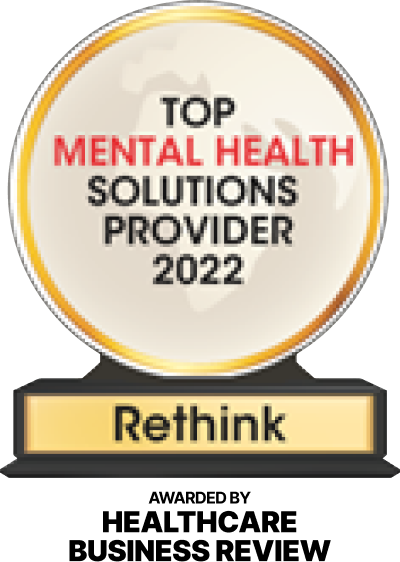When Jared walked into a meeting to discuss a new marketing approach for a product, the conversation didn’t play out well. Five minutes into the dialogue, the product manager, Françoise, started interrupting him with questions he was planning to address later in the pitch. As the conversation ran off the rails, Jared struggled to keep a calm demeanor, while Françoise multitasked; Jared watched in frustration as she sent at least five text messages during their altercation. Jared left the meeting feeling belittled and demoralized. Françoise left feeling frazzled and irritated—she didn’t have time to sit through a poorly thought-out presentation. There was too much other work to get done!
All of us have experienced communication meltdowns similar to Jared’s. Maybe you were Jared or Françoise in the scenario. By the time you walked away from the conversation, you could have cut the tension with a knife. And your agenda didn’t play out the way you were hoping. You ended up carrying the conversation with you. It weighed heavily on your mind, adding more stress to your workload. For people like Jared and Françoise, it can take a lot more time and effort to recover from a breakdown in communication than to avoid one in the first place.
Research suggests there are three things you can do to avoid communication breakdowns like this.
1. Be Present (Really)
Whether we’re walking into a meeting, drafting an important proposal, or sitting down face-to-face with a romantic partner, our attention can easily be hijacked, especially when our mind wanders 50% of the time, as research suggests. Add in the dozens of emails, texts, calls, and instant messages we receive every hour, and staying focused just gets that much harder. Once we’re interrupted, it takes effort and time to refocus. Multitasking, especially with digital media, can have an adverse effect on our mental capacity and affect our productivity, as one Stanford study indicates.
Yet research suggests that the key to charisma and connection is presence—that special ability to make people feel like they are the only person in the room (for more details and charisma how-to’s, check out The Happiness Track.)
Given our busy schedules and the many messages and emails, too often we are simply not present with the people in front of us. We’re thinking about something that happened earlier or an article we just read or a phone conversation we just had. Our mind is elsewhere. The more we can bring our wandering mind to the present, the easier and more natural it becomes to connect, listen, and be open and authentic.
To help you stay present in a meeting or conversation, turn away from your computer and put your phone into airplane mode. Even better, leave your phone at your desk. The mere presence of a phone at a meeting can make people feel less connected, damaging your ability to communicate successfully.
If you have a moment or two before the meeting, rather than trying to send a few additional emails, meditate or do some calming breathing exercises. Empty your mind so you can be fully present, attentive, and skillful. Even if you have only a second before answering a ringing phone or walking into a conference room, pause and take one deep breath. A simple yet powerful suggestion Thich Nhat Hanh makes in his book A Year to Clear, take the first couple of rings as an opportunity to smile before picking up. Research shows that the very act of smiling relaxes you and makes you feel better—and the person on the other line will probably respond accordingly.
2. Listen More
This wisdom has been around for a long time: “We have two ears and one mouth, so we should listen more than we say.” The quote is attributed to Stoic philosopher Zeno of Citium. Be genuinely curious and interested in what is being said, even if initially you’re not. Pay attention to cues: Does the person spend a lot of time on a particular point? Does she get more animated at specific junctures and less at others? Listening more and with curiosity not only helps you to better connect and understand what is being said, but also provides valuable input on how you may frame your response and navigate the conversation. It can help you tune into the topics your colleague is passionate about. Getting to know them will help you see their perspective and come to an agreement that meets everyone’s needs. From this place of actively listening, your conversation will move forward more constructively.
This type of conversation might actually teach you something as well. Henry Elkus, CEO of Helena, created space to hear feedback from everyone in his company, even interns. Thanks to this openness, one of his interns helped dramatically improve the direction his organization would take. “The intern saved me and the rest of our team the wasted time and energy we might have spent continuing down a suboptimal path,” Elkus said. (To learn more about the power of being Quiet, don’t miss Susan Cain’s bestselling book on the subject)
3. Be Open
Communication involves the exchange of viewpoints, sometimes opposing positions. Unless you open your mind to another’s perspective, common ground can be tough to find. And finding common ground requires us to listen in order to really consider someone’s position.
Being open-minded at times may require you to be open to being proven wrong. Elkus created a company culture in which debate is openly valued and encouraged; in this culture, feedback doesn’t just trickle from top to bottom, but also from the bottom up. Though this type of culture is challenging for him as the leader, it has proven tremendously beneficial: “A culture where even the interns can feel free to opine against you means opening yourself up to being proven wrong, often publicly. Indeed, this exact situation has happened to me, more than once! But an intern challenging me so directly—and being right—has immense value. As a CEO, I was warned that this model would threaten my own power inside the organization. In fact, I was uncomfortable, and I was heavily challenged. But the discomfort was worth it. The collective feedback approach was crucial to improving our strategy. And because every employee could feel some ownership in creating our plan, they were far more motivated to execute it.”
As someone is speaking, notice: Are you already thinking about your rebuttal? Are you responding with a “yes,” followed by an immediate “but”? Or have you already interrupted? Be open to another person’s perspective. If you’re worried about not having the perfect reply, you can always say, “I haven’t thought about it that way before. Can you give me a day or so to think it over?” To our knowledge, no one has ever complained about someone listening to what they’ve said and taking a little extra time to thoughtfully analyze and respond to it.
Over time, listening openly and attentively to others helps to cultivate trust. As Adam Grant has powerfully argued in his New York Times bestselling book Give & Take, we prefer to interact and work with people we trust and who are kind. Reflect on your experiences: The more connected you feel to someone, the more you tend to trust that person, and the easier it becomes to talk. This contributes to a sense of psychological safety, which according to a Google study is the key to successful teams. The ability to take risks and speak up can be the difference between thwarting a mistake or learning from one. In the end, everyone benefits.
This article has been republished from Psychology Today. It first appeared in Harvard Business Review and was co-written with Jennifer Stevenson, of the TLEX Institute.











